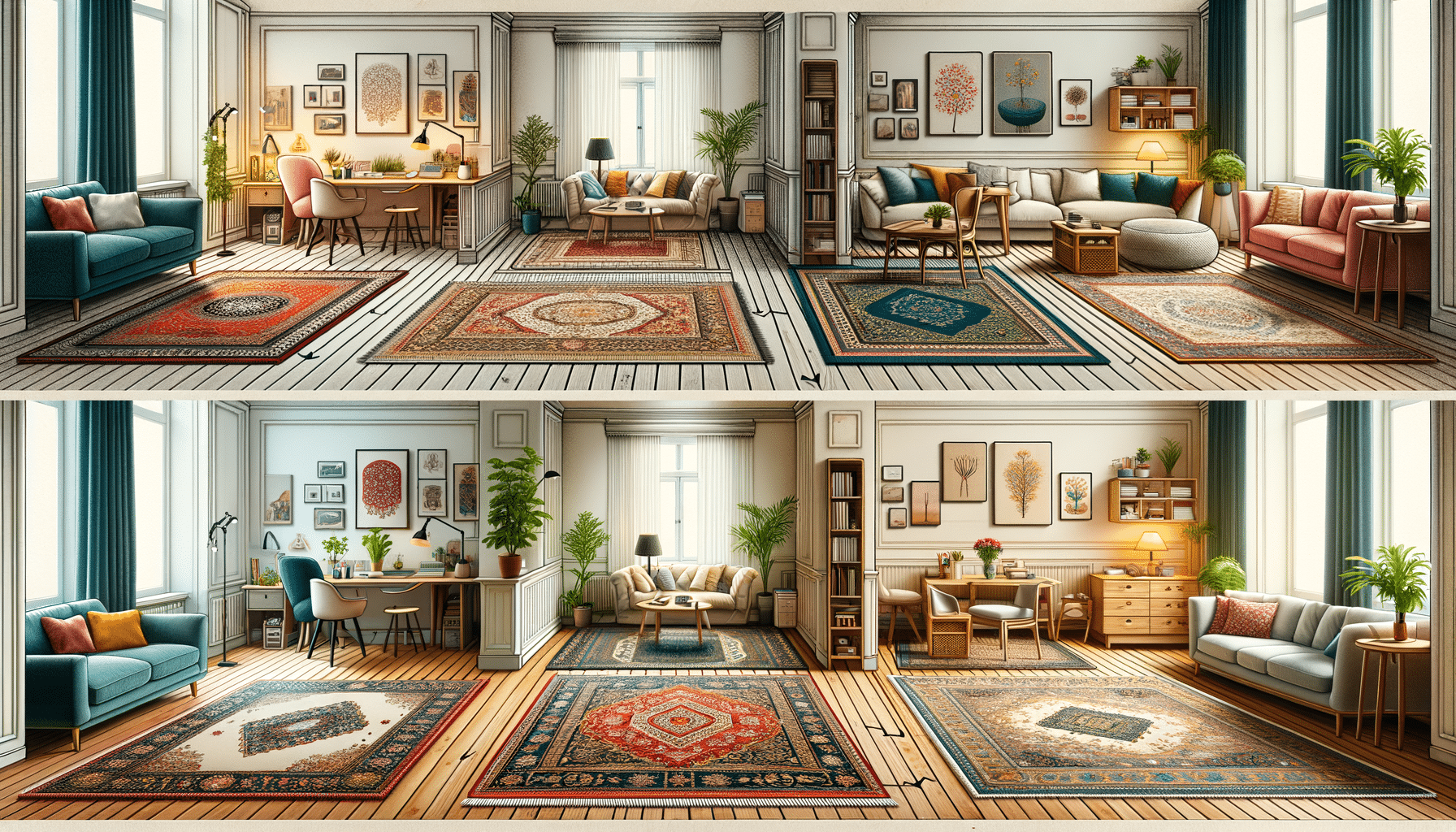Transforming Spaces with Area Rugs: A Comprehensive Guide
Explore the multifaceted world of area rugs and discover how they can transform your living spaces with style and functionality.

The Aesthetic Appeal of Area Rugs
Area rugs have long been celebrated for their ability to transform a room with minimal effort. They offer a quick and effective way to add color, texture, and warmth to any space. Whether you’re looking to make a bold statement or create a cohesive look, area rugs can be a versatile tool in your interior design arsenal. The variety of designs available, from traditional patterns to modern abstracts, ensures that there is an area rug to suit every taste and style preference.
In addition to their visual appeal, area rugs can serve as a focal point in a room. Placing a rug under a coffee table or dining set can help define the space and bring a sense of order to an open floor plan. Moreover, the right area rug can tie together disparate elements within a room, providing a unified look that enhances the overall aesthetic.
Area rugs are not just decorative; they also offer practical benefits. They can protect flooring from wear and tear, reduce noise, and provide a comfortable surface underfoot. This makes them particularly useful in high-traffic areas or in homes with children and pets.
Choosing the Right Material for Your Area Rug
The material of an area rug is crucial in determining its durability, feel, and maintenance requirements. Common materials include wool, cotton, silk, and synthetic fibers, each offering distinct advantages.
- Wool: Known for its durability and softness, wool is a popular choice for area rugs. It is naturally stain-resistant and can handle heavy foot traffic, making it ideal for living rooms and hallways.
- Cotton: Cotton rugs are soft and easy to clean, though they may not be as durable as wool. They are perfect for casual settings and can be machine-washed, which is convenient for families.
- Silk: Luxurious and elegant, silk rugs are best suited for low-traffic areas. They add a touch of sophistication but require careful maintenance to preserve their delicate fibers.
- Synthetic Fibers: Materials like nylon, polyester, and polypropylene are budget-friendly and resistant to stains and fading. They are a practical choice for households with kids or pets.
When selecting a material, consider the room’s function, the amount of foot traffic, and your personal preferences regarding texture and maintenance.
Understanding the Impact of Size and Placement
Choosing the right size and placement for an area rug is essential to achieving the desired effect in a room. An incorrectly sized rug can disrupt the balance of a space, making it feel awkward or cramped.
For living rooms, a common approach is to select a rug that is large enough to fit under the front legs of sofas and chairs, creating a cohesive seating area. In dining rooms, the rug should extend beyond the edges of the table, allowing chairs to remain on the rug even when pulled out.
Bedrooms offer more flexibility in rug placement. A large rug positioned under the bed can anchor the room, while smaller rugs on either side provide warmth and comfort when stepping out of bed.
Consider the room’s dimensions and furniture layout when selecting a rug size. Tape out the rug’s dimensions on the floor to visualize its impact before making a purchase. This simple step can help ensure that the rug complements the room’s proportions and enhances its overall design.
Maintaining and Caring for Your Area Rug
Proper maintenance is key to preserving the beauty and longevity of an area rug. Regular cleaning can prevent dirt and debris from becoming embedded in the fibers, which can lead to wear and tear over time.
Vacuuming is the most effective way to keep rugs clean. Use a vacuum with adjustable height settings to avoid damaging the fibers. For delicate materials like silk, consider using a handheld vacuum or a brush attachment.
Spills should be addressed immediately to prevent staining. Blot the spill with a clean cloth, working from the outside in to avoid spreading. Use a mild detergent or a specialized rug cleaner for tougher stains, and always test the cleaner on an inconspicuous area first.
Periodically rotate your rug to ensure even wear, especially in high-traffic areas. This simple practice can extend the life of your rug and maintain its appearance.
The Environmental Impact of Area Rugs
As consumers become increasingly conscious of their environmental footprint, the sustainability of area rugs has gained attention. Many manufacturers now offer eco-friendly options made from renewable materials and sustainable production methods.
Natural fibers like wool and cotton are biodegradable and have a lower environmental impact compared to synthetic materials. Additionally, some companies use organic dyes and non-toxic chemicals in their manufacturing processes, reducing harmful emissions and waste.
Recycled materials are also becoming popular in the rug industry. Rugs made from recycled plastics or repurposed textiles offer a sustainable alternative without compromising on style or quality.
When purchasing an area rug, consider its environmental impact and look for certifications or labels that indicate eco-friendly practices. Supporting sustainable brands can contribute to a healthier planet while enhancing your home’s decor.